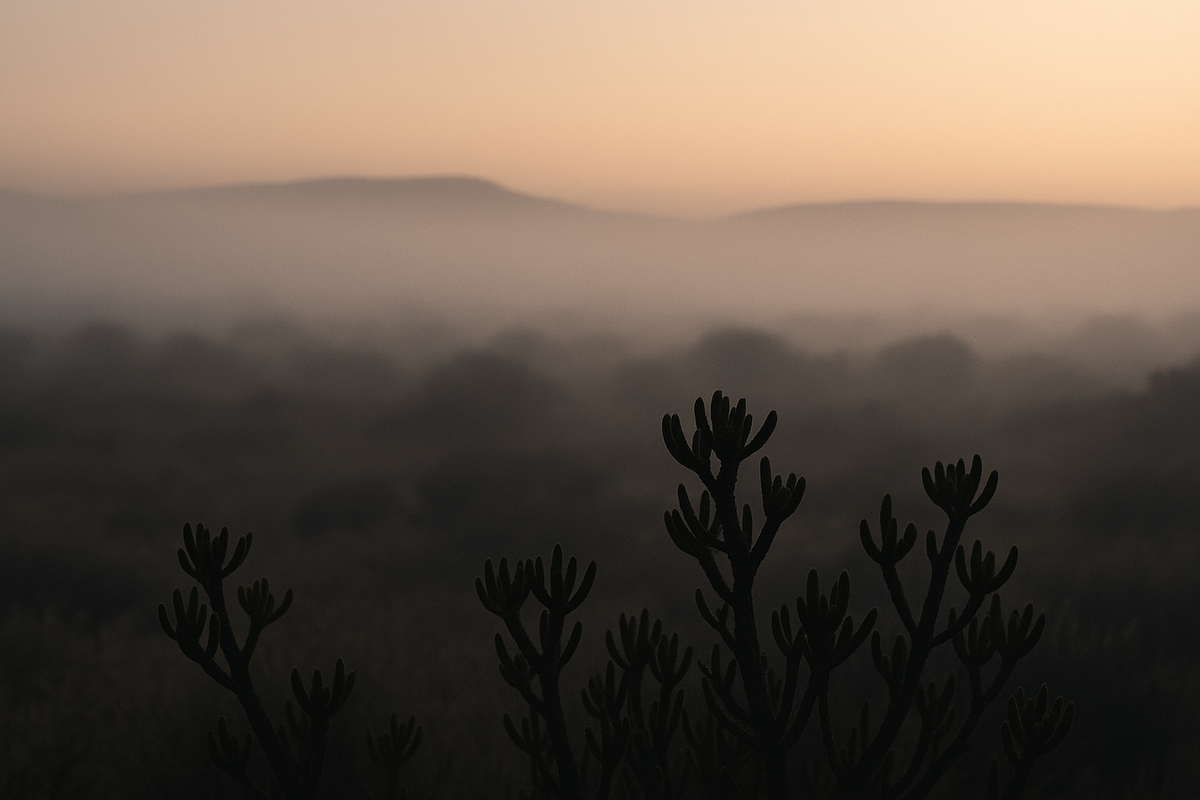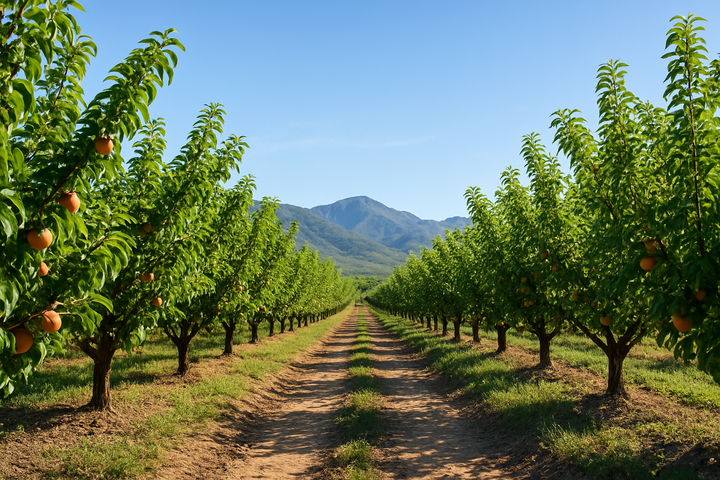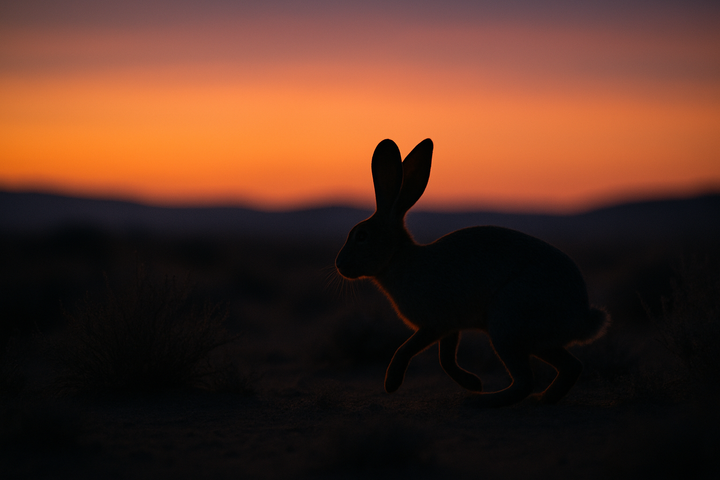The plants that drink fog
The Karoo’s fog-drinking plants show how life adjusts to scarcity with grace and ingenuity.

At dawn a small miracle unfolds. Tiny beads of moisture drift in from the Atlantic, rolling over the semi-desert plains in ghostly fog. It’s a fleeting beauty to the casual eye, but for many of the Karoo’s plants, it’s survival itself.

Life beyond rain
The Succulent Karoo is one of the world’s most remarkable dryland biomes. Stretching across parts of the Northern and Western Cape into southern Namibia, it’s home to over 6,000 plant species, nearly half found nowhere else on Earth.
Rainfall here can be erratic, sometimes less than 100 millimetres a year. What keeps this world alive is not just the rare rainstorm, but the persistent breath of fog and dew that creeps inland from the cold Benguela Current.
Studies from the South African Environmental Observation Network (SAEON) and the University of Cape Town have shown that coastal and near-coastal succulents have evolved to “drink” from the air. They harvest moisture not through roots, but through leaves, stems, and specialised surface structures that trap and funnel water droplets.
Fog harvesters of the Karoo
Take the Mesembryanthemum family, commonly known as vygies. Their shimmering, crystal-like leaf cells act like miniature mirrors that both reflect harsh sunlight and collect dew.
When fog drifts in, these cells condense moisture, which then runs down to the plant’s roots. It’s an elegant exchange between air and earth that allows the vygies to bloom brilliantly in spring even when months have passed without rain.

Other species, such as the Aizoaceae and certain Crassula varieties, take this further. Their leaves are covered in microscopic hairs or waxy coatings designed to trap humidity. Some even curve inward overnight, creating a tiny chamber where dew can gather before dawn.
Then there are the fog-fed shrubs of Namaqualand, like Zygophyllum stapffii, known for its thick, succulent leaves that can absorb water directly from mist.
Researchers comparing coastal and inland populations have found that plants closer to the ocean rely far more on atmospheric moisture, proving just how adaptive and localised these strategies are.
The science behind fog feeding
In ecological terms, this phenomenon is called foliar water uptake: the ability of leaves to absorb water directly. It’s common in cloud forests and coastal deserts worldwide, from Chile’s Atacama to Namibia’s Skeleton Coast. Foliar water uptake has become part of the art of endurance in the Karoo.
During fog events, leaves act as condensation surfaces. Tiny droplets adhere to trichomes (fine hairs) or cuticular waxes, seeping through cell walls or entering through small pores. In some cases, capillary action draws this moisture along stems into the plant’s vascular system. It’s a delicate process, dependent on humidity levels, wind speed, and the plant’s physical design.
For scientists, this adaptation offers clues about how ecosystems might cope with climate change.
As rainfall patterns shift and droughts intensify, fog-dependent species could represent an evolutionary advantage, proof that survival in arid zones doesn’t always hinge on rain.
Lessons in survival
The Karoo’s fog-drinking plants are teachers as well as survivors. They show how life adjusts to scarcity with grace and ingenuity. Instead of waiting for abundance, these plants gather what little the air provides and make it enough.
For conservationists, their resilience underscores the importance of protecting the Succulent Karoo biome. Recognised as a global biodiversity hotspot, it’s one of only two entirely arid regions in the world to earn that title. Yet it faces mounting threats: overgrazing, habitat loss, and the creeping effects of climate change.
Preserving its delicate balance means safeguarding the very fog corridors that sustain it.
Climate adaptation in motion
Climate models suggest that while rainfall may decline in the western interior, coastal fog frequency could actually rise due to oceanic temperature changes.
This might create a shifting frontier where some fog-dependent plants expand while others retreat. Monitoring these changes will be crucial, not just for botanists but for farmers and communities that share the land.
In places where groundwater grows scarcer and traditional crops struggle, there’s growing interest in how native succulents manage their water economy.
Species like Aloe dichotoma (the quiver tree) and Tylecodon paniculatus (butter tree) are being studied for their drought resistance and fog uptake potential, inspiring new thinking in regenerative agriculture and landscape restoration.
The future of fog
As the sun climbs over the escarpment and the fog thins, droplets glisten on every thorn and petal. Beneath the soil, that invisible drink of water has already been absorbed, sustaining life until the next mist rolls in. The plants of the Karoo remind us that adaptation is precise: knowing when and how to take what the world offers.
In a region defined by extremes, this is a dew-spun wisdom waiting for those willing to look closely enough to see it.





Comments ()